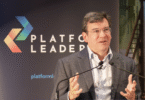Doug Arent leads the National Renewable Energy Laboratory Foundation as Executive Director, focusing on vision and strategic initiatives that accelerate the transition to an affordable and secure energy future. He is the author of the book Our Renewable Energy Future: The Remarkable Story of How Renewable Energy Will Become the Basis of Our Lives and is co-chair of the World Economic Forum’s Energy Technology Frontiers Council. With over 40 years of experience in energy and sustainability research, he has published widely on renewable energy, integrated energy and power systems, and science-policy intersections.
Arent is a distinguished fellow of the World Economic Forum and a senior visiting fellow at the Center for Strategic and International Studies. He serves on the Keystone Energy Board and the Yale Emerging Climate Leaders Fellowship Global Advisory Board. His academic roles include an external fellowship at Columbia University’s Center on Global Energy Policy and a recent fellowship at Princeton University’s Andlinger Center for Energy and the Environment. He has served on numerous advisory panels, including the National Petroleum Council and the National Academy of Sciences.
Arent, who holds a Ph.D. from Princeton University, an MBA from Regis University, and a B.S. from Harvey Mudd College, recently spoke to The Innovator about the need for systemic innovation in the energy sector.
Q: What are some of the key takeaways from your book?
DA: I got the idea during Covid to write a book to capture the essence of the many decades of the energy transition learning journey, to give an–historical context to where we are today. We are at an incredible inflection point and so much technology development, policy learning and creative financing has helped to get us to this point. We are so much smarter than we were in the 1970s. We thought solar was for satellites and not much more and now we are at more than 500 gigawatts per year of new capacity around the globe and we know how to manage incredibly complex digitalized systems that apply AI and include virtual power plants, solar, wind, natural gas, storage and nuclear.
Q: What do you see as the impact of AI on the sector?
DA: AI is useful for optimizing our energy ecosystem, but it also needs energy. Right now, the demand side dominates the AI discussion because it requires gigawatt scale power. Questions include whether the AI data centers will use clean electrons on the front end, whether the grid will be sufficient, what the water footprint will be, and whether we can build them fast enough and what the cost implications will be for consumers. All that is solvable. AI needs to be seen in context. It does require a lot of energy but even with a strong growth rate, we are still only talking about 2% to 8% of total energy demands by 2035. AI’s energy demands will be outpaced by air conditioning and electric mobility. About 10 years ago, I and some others coined the phrase ‘power system flexibility.’ Demand has always changed, and supply is designed to meet the demand. The whole idea of flexibility centered around power plants having the capability to ramp energy up and down to meet demand. That was Flexibility 1.0. Today Flexibility 2.0 takes a much more holistic approach. For example, data centers are on the demand side, but they can also be a source of flexible load or even additional supply for a few hours at any given time (using their backup systems) so that the grid can service other loads. In that way, data centers become a part of the solution. AI is also incredibly useful for energy. Here examples include using AI for grid optimization: we might be able to flow 30% or 40% more electrons through our existing power grid. AI-enabled virtual power plants would unlock 10% to 20% more demand side flexibility, reducing the need for peak power plants and the corresponding infrastructure.
Q: You are the chair of the World Economic Forum’s Global Future Council on Energy Technology Frontier technologies. What is your work focused on?
DA: The Forum’s Network of Global Future Councils is a multi-sector knowledge network dedicated to promoting innovative thinking to advance a more resilient, inclusive and sustainable future. Insights from its 37 councils are taken forward by the Forum’s ongoing initiatives, communities and meetings. The Energy Technology Frontier Council is looking at what energy systems need to achieve the desired impact at scale locally and globally. To get to desired impacts we need to recognize the multiple attributes that are so critical – abundance, availability, reliability and resilience, affordability, environmental sustainability and energy security. Those need to be addressed holistically.
We also need to look at what ingredients are needed for accelerating energy innovation. Technology is not enough. You need the supply chain, the installation services, sufficient demand, scalable financing, and the business models to bring new energy solutions to market at the speed and scale needed to meet growing demand, address energy inequities and address sustainability goals. Accelerating energy innovation and getting it to market as fast as possible requires what I referred to in a TedX talk as unconventional partnerships – a rethinking of public private partnerships. Governments, industry and civil society all need to holistically work together to bring together the ingredients simultaneously with an intentional plan in a specific technology area. Industry needs to play a very significant role because the private sector is motivated by profit to expand and to grow a scalable business for their customers.
Q: What other roles do you see business playing?
DA: Large industrial players have multiple important roles. Many large players systemically think of tech innovation as something to do from inside their business units with some corporate R&D in-house with maybe a few university partnerships. They need to think much more boldly about unconventional partners to advance the innovation funnel, including working with national labs and other industrial players. New types of partnerships are needed with creative and appropriate IP and business models. There is an enormous under appreciation for looking across sectors and across disciplines. On the scaling side, companies have an powerful ability to do appropriate engineering at scale to test new approaches and derisk technology.
Q: The council is just getting started on its work. From what has been discussed so far are there successful innovation ecosystems that others could learn from?
DA: China has built successful innovation ecosystems in solar, electric cars, batteries and is working on a fourth one around hydrogen. The Chinese recipe in all these areas has been a very intentional multi-year approach in these strategic valued-added industries. They invest in the technology, support national scientific capabilities and then support the advance of manufacturing at scale while simultaneously assuring a large enough domestic market to drive manufacturing and technology advancement that leads to significant cost reductions and thus competitiveness with incumbent/legacy products/solutions. The domestic companies are entrepreneurial- they drive for cost reductions to capture domestic market share and then they expand globally. This recipe has helped China achieve a 90% market share in solar and can be repeated by other sectors, not only in China but elsewhere.
Q: What do you want readers to take away from this interview?
DA: Energy solutions going forward must simultaneously address security, affordability, profitability and environmental attributes together, not one at the expense of others. This requires systemic innovation. Is there urgency? Absolutely. We need to do it at scale as quickly as possible.
This article is content that would normally only be available to subscribers. Become a subscriber to see what you have been missing.







